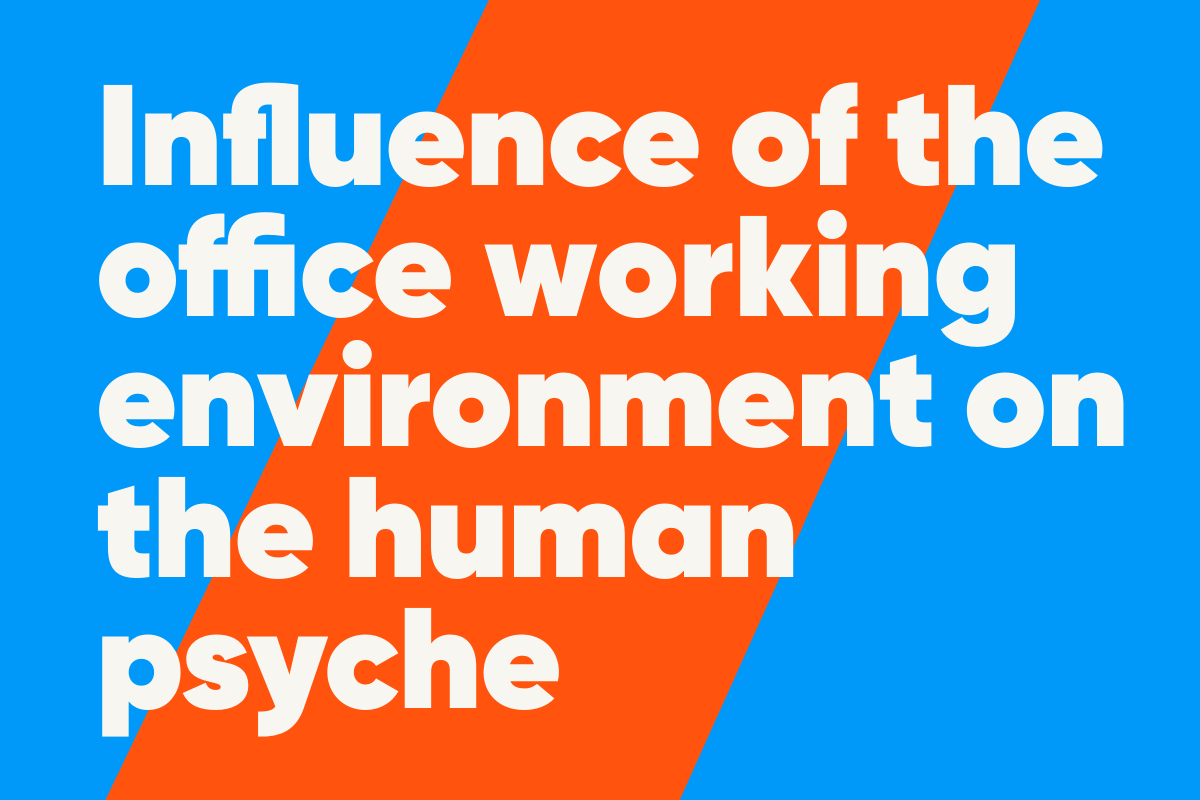The design of the office working environment has a significant impact on the mental health and performance of employees. This article presents the latest scientific findings that shed light on the connection between office design and the human psyche. The article is aimed at architects, CEOs, entrepreneurs and HR departments and is intended to incentivise action and increase willingness to invest.
Importance of the office working environment
Office planning plays a decisive role in the well-being and productivity of employees. Studies have shown that factors such as lighting conditions, acoustics, room layout and ergonomic office furniture contribute significantly to mental health. An optimally designed office can reduce stress, increase satisfaction and improve overall work performance.
Lighting conditions
A study by Begemann, van den Beld and Tenner (1997) shows that natural light has a positive effect on the well-being and productivity of employees. Employees who work in offices with sufficient daylight report greater satisfaction and fewer health problems.
Acoustics
Noise pollution in the office can lead to stress and concentration problems. A study by Banbury and Berry (2005) shows that noise can significantly impair cognitive performance. Measures to improve acoustics, such as acoustic absorbers and the creation of quiet zones, are therefore essential.
Room layout
The room layout influences the interaction and collaboration of employees. According to a study by Kampschroer and Heerwagen (2005), open-plan concepts promote communication and the exchange of ideas. At the same time, it is important to provide places of retreat for concentrated work. Modern concepts such as New Work and Shared Desk enable flexible working conditions that promote both collaboration and individual concentration.
Ergonomic office furniture
Ergonomic office furniture makes a significant contribution to physical and mental health. A meta-analysis by Tissot et al. (2009) shows that ergonomically designed workstations reduce the risk of musculoskeletal disorders and increase general satisfaction. In particular, an ergonomic swivel chair or office swivel chair and a height-adjustable workstation are key elements of a healthy workplace.
Success stories from the field
Various companies have achieved significant improvements by adapting their office working environment. Google, for example, has increased the satisfaction and creativity of its employees through innovative room concepts and ergonomic office furniture. Another example is Microsoft, which has been able to promote productivity and collaboration through flexible workstations and a well thought-out room layout.
Philosophy and expertise of the Hauser company
Hauser Office Design GmbH specialises in the planning and implementation of large-scale furnishing projects. Our philosophy is based on the principle that people need to feel comfortable in order to be motivated to work. We create liveable spaces for people and guarantee smooth processes and real added value at the interfaces through close networking of planning and realisation.
Our long-standing relationships with customers and employees serve as our motivation and benchmark. We stand behind what we do one hundred per cent and offer excellent products and services that we have mastered to perfection. A permanent project team guarantees fast and competent information at all times.
Conclusion
Office planning is a key factor for the mental health and performance of employees. Architects, entrepreneurs and CEOs are called upon to optimise working conditions through targeted measures. Hauser Office Design GmbH offers comprehensive expertise and innovative solutions to create liveable and productive workspaces.
For a free initial consultation, you can book an appointment online via Calendly. To the appointment booking.
Sources:
- Banbury, S. P., & Berry, D. C. (2005). Office noise and employee concentration: Identifying causes of disruption and potential improvements. *Ergonomics*, 48(1), 25-37.
- Begemann, S. H. A., van den Beld, G. J., & Tenner, A. D. (1997). Daylight, artificial light and people in an office environment, overview of visual and biological responses. *International Journal of Industrial Ergonomics*, 20(3), 231-239.
- Kampschroer, K., & Heerwagen, J. (2005). The practice of office workplace design: Correlating performance and architecture. *Journal of Architectural and Planning Research*, 22(2), 91-102.
- Tissot, F., Messing, K., & Stock, S. (2009). Studying the relationship between low-back pain and working postures among those who stand and those who sit most of the working day. *Ergonomics*, 52(11), 1402-1418.
Your Christian Racuteanu
Hauser Bürogestaltung GmbH
(To improve the readability of our blog posts, we use the generic masculine. All personal designations refer equally to all genders. In this way, we avoid the simultaneous use of female and male language forms).

